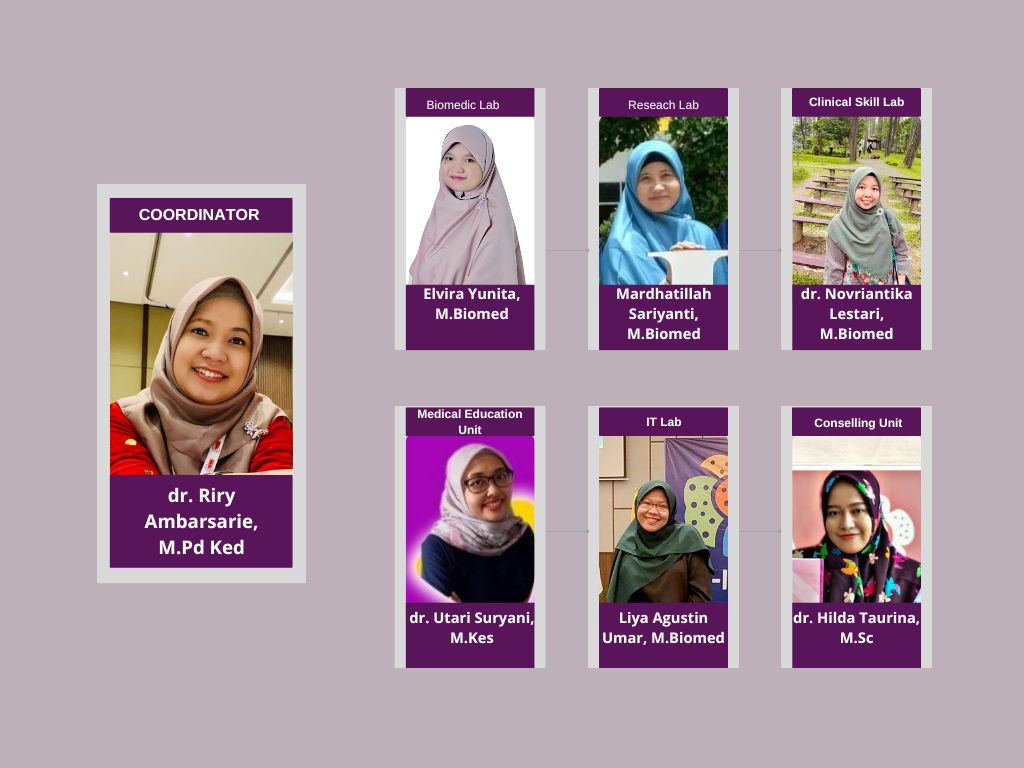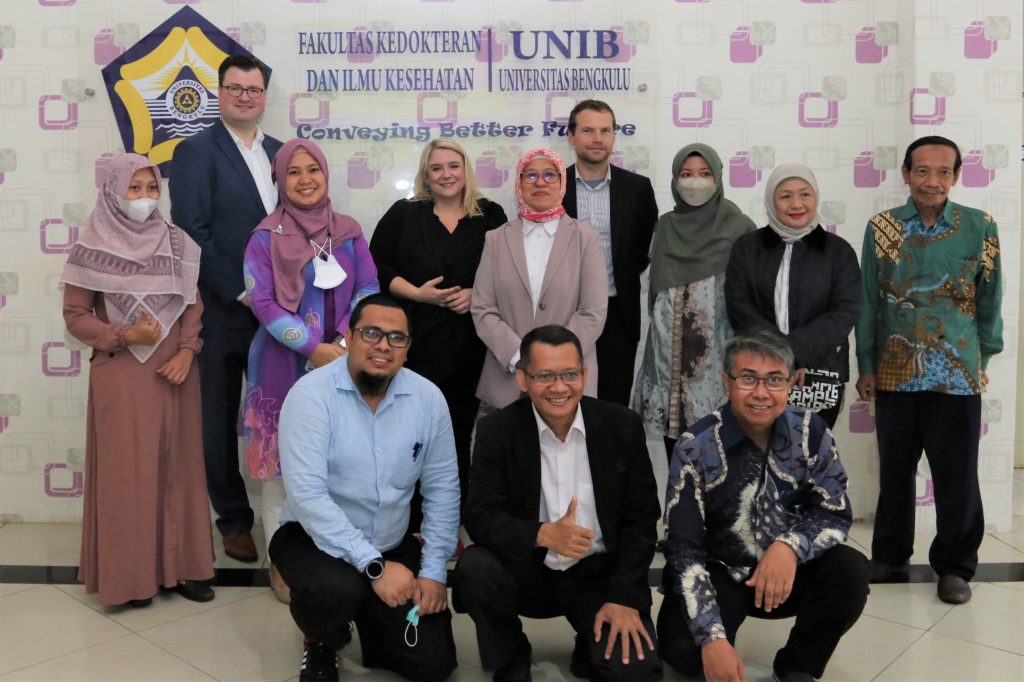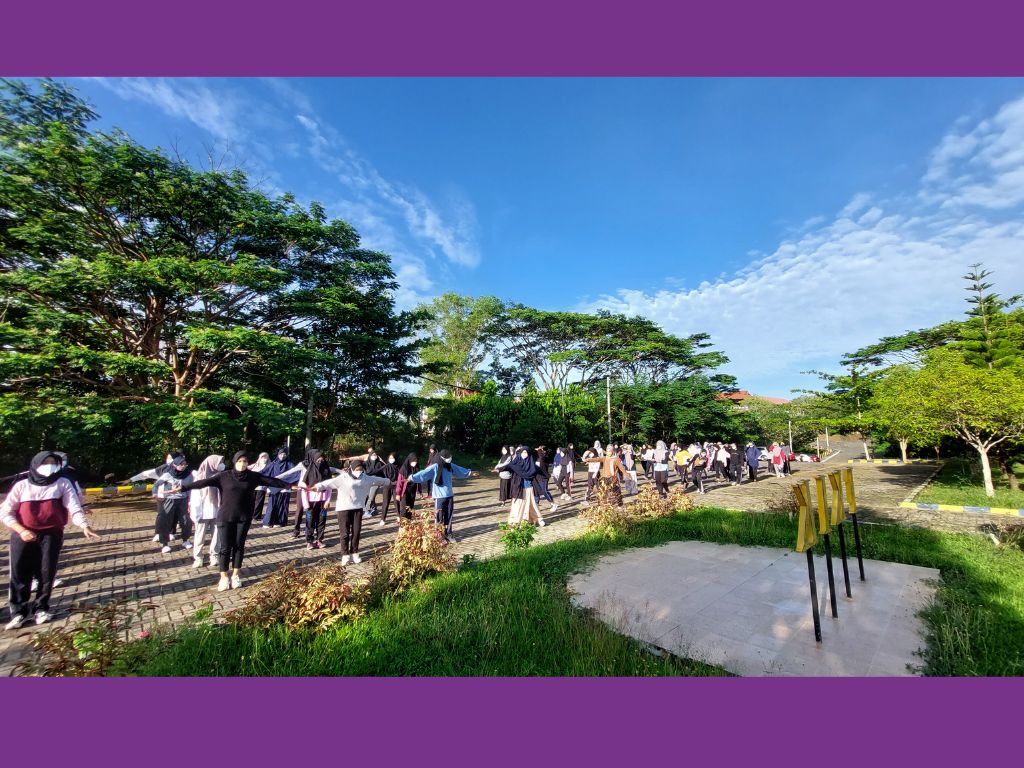UNIVERSITY LIFE
The University of Bengkulu campus building is divided into three locations with a total land area of 97.84 hectares. The campus at Kandang Limun is the main campus, while the other two are located in the Air Sebakul and Cimanuk areas. The University of Bengkulu takes the environmental conservation seriously. The existence of lots of green land and lakes amidst the tens of hectares of land makes the campus environment looks beautiful. These locations are easily accessed by people from outside the Bengkulu Province because it is only 30 minutes from Fatmawati Airport to the University of Bengkulu campus. The University of Bengkulu has public facilities that can be used by all students, including FMIPA students, such as the Multipurpose Building (GSG), Integrated Services Building (GLT), UNIB Library, Pratama Clinic, Sports Center, Campus Bus, Football field, banking facilities in collaboration with BNI and worship places (mosque).
STUDENT ACTIVITY
The learning strategy used in the BM Study Programme is in accordance with the Problem-Based Learning (PBL) method, such as SPICES (Student-Centred, Problem-Based Learning, Integrated Teaching, Community Oriented, Early Clinical Exposure, Self Directed Learning). At the stage of academic education, the curriculum is implemented through modules that integrate several disciplines both horizontally and vertically. The PBL method is beneficial in the systematic learning process, the adult learning process, recognising real problems through scenarios, and supporting the concept of lifelong learning. The implementation of this curriculum uses a spiral approach, in which the material is well-received by students and is developed based on vertical and horizontal breadth.
CURICULUM
The integration of science interdisciplinary learning materials is applied in group discussion activities. The learning scenarios are arranged in a complex way so that the scenarios can stimulate critical thinking processes and determine the flow of thinking comprehensively to understand and solve medical problems. The integration of science is more clearly seen in Basic Clinical Skills (henceforth KKD – Keterampilan Klinis Dasar) tutorial activities. The tutorial process integrates several sciences disciplines such as basic medical sciences, integrated medical sciences, communication, professionalism, and the medical community so that intradisciplinary and interdisciplinary integration in the learning process can happen. Practicum learning methods in the laboratory are also implemented to support students’ skills in studying various supporting examinations in establishing a diagnosis and preparing research skills. The BM Study Programme arranges a Teaching Instructional Design (BRP) book that consists of a module learning plan covering all lecture activities, practicums, group discussions, and tutorials of KKD to ensure that the learning process suits the objectives.
BACHELOR OF MEDICINE (BM)
The Bachelor Medicine in Undergraduate Programme was established at UNIB in 2008, with a study duration of four academic years (8 semesters). BM Study Programme was established in 2008, earlier than FKIK, considering the opening of the BM Study Programme based on the Decree of the Director General of Higher Education Number 1661/02.2/2008 dated July 11th, 2008. The Medical Doctor Profession Education Programme establishment was under the Decree of the Director General of Higher Education Number 2132/D/T/2008. The admission of the fresh student was held in 2009. After graduating from the BM programme, the students should continue their studies in the Profession Programme in Medicine.
Update News
VISIT BLOGAdditional Information of the BM Study Programme


ACQUIN ACTIVITY

STUDENT ACTIVITY



![[DEVELOPMENT OF HIGHLY PATHOGENIC AVIAN INFLUENZA VACCINE FOR PANDEMIC INFLUENZA PREPAREDNESS : A REVIEW] [DEVELOPMENT OF HIGHLY PATHOGENIC AVIAN INFLUENZA VACCINE FOR PANDEMIC INFLUENZA PREPAREDNESS : A REVIEW]](https://medical.unib.ac.id/bm/wp-content/uploads/sites/2/2022/09/logo-unib-fav.png)